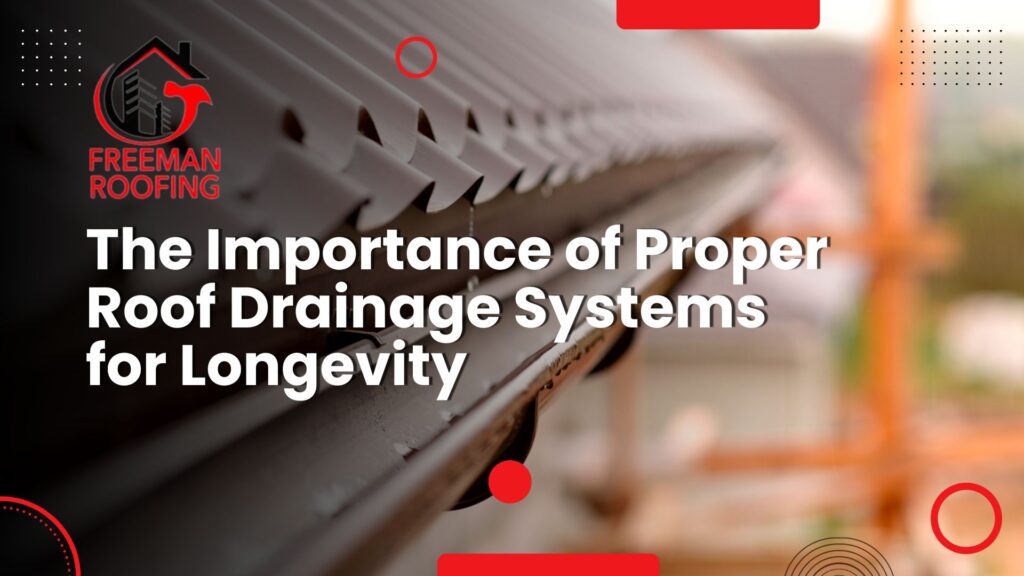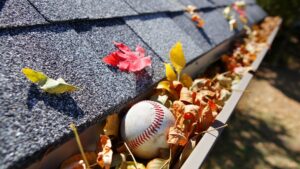The Importance of Proper Roof Drainage Systems for Longevity

Your roof is your home’s first line of defense against the elements, but even the strongest roof can suffer if it lacks proper drainage. Roof drainage systems play a critical role in directing water away from your home and preventing damage. This article explores the importance of proper roof drainage, how it impacts your roof’s longevity, and tips for maintaining these systems.
Why Proper Roof Drainage Matters
1. Prevents Water Damage
One of the primary functions of a roof drainage system is to prevent water from pooling on your roof. Standing water can seep through shingles, leading to leaks, mold growth, and damage to your home’s interior.
2. Reduces Structural Stress
Water is surprisingly heavy, and accumulated moisture can strain your roof’s structure over time. Proper drainage ensures that rainwater flows off quickly, protecting the integrity of your home.
3. Protects Against Foundation Issues
Without a functional drainage system, water can spill over the edges of your roof and collect around your foundation. Over time, this can lead to foundation cracks and basement flooding, which are costly to repair.
4. Extends Roof Lifespan
Excess moisture can cause materials like shingles, flashing, and underlayment to deteriorate prematurely. By effectively channeling water away, roof drainage systems help your roof last longer.
Key Components of a Roof Drainage System

1. Gutters
Gutters are designed to collect rainwater from the edges of your roof and direct it toward downspouts. Regular cleaning is essential to prevent clogs that can cause water to back up and overflow.
2. Downspouts
Downspouts carry water from the gutters to the ground or a drainage system. Ensure they are properly positioned to direct water away from your home’s foundation.
3. Roof Slope
A well-designed roof slope encourages water to flow toward the drainage system. Flat or poorly sloped roofs may require additional drainage features, such as scuppers or internal drains.
4. Drains and Scuppers
For flat roofs, drains and scuppers provide an efficient way to channel water off the surface. Regular maintenance ensures these components remain free of debris and functional.
Common Issues with Roof Drainage Systems

1. Clogged Gutters
Leaves, twigs, and debris can block gutters, causing water to overflow and damage your roof, siding, or foundation.
2. Improper Installation
Incorrectly installed gutters or downspouts may not direct water efficiently, leading to pooling and other issues.
3. Ice Dams
In colder climates, ice dams can form along the edges of your roof, blocking drainage and causing water to back up under shingles.
4. Insufficient Maintenance
Neglecting regular inspections and cleaning can lead to undetected problems that worsen over time.
How to Maintain Your Roof Drainage System
1. Clean Gutters Regularly
Remove debris from gutters and downspouts at least twice a year, especially after the fall season or a major storm.
2. Check for Damage
Inspect your gutters, downspouts, and roof for signs of wear, rust, or cracks. Address issues promptly to prevent further damage.
3. Install Gutter Guards
Gutter guards can reduce debris buildup, making maintenance easier and ensuring smooth water flow.
4. Ensure Proper Slope
Verify that your gutters are sloped correctly to direct water toward downspouts.
5. Address Ice Dams
Use proper attic insulation and ventilation to prevent the formation of ice dams during winter.
Professional Solutions for Roof Drainage
If your home’s drainage system is outdated or inadequate, consult a professional roofing contractor. They can assess your current setup and recommend improvements, such as:
- Installing larger gutters for increased capacity
- Adding additional downspouts for better water distribution
- Upgrading to advanced drainage solutions for flat roofs
Conclusion
Proper roof drainage is essential for protecting your home and ensuring the longevity of your roof. By maintaining gutters, downspouts, and other drainage components, you can prevent costly water damage and extend the life of your roof. Regular inspections and professional assistance when needed will help keep your home safe, dry, and secure for years to come.
